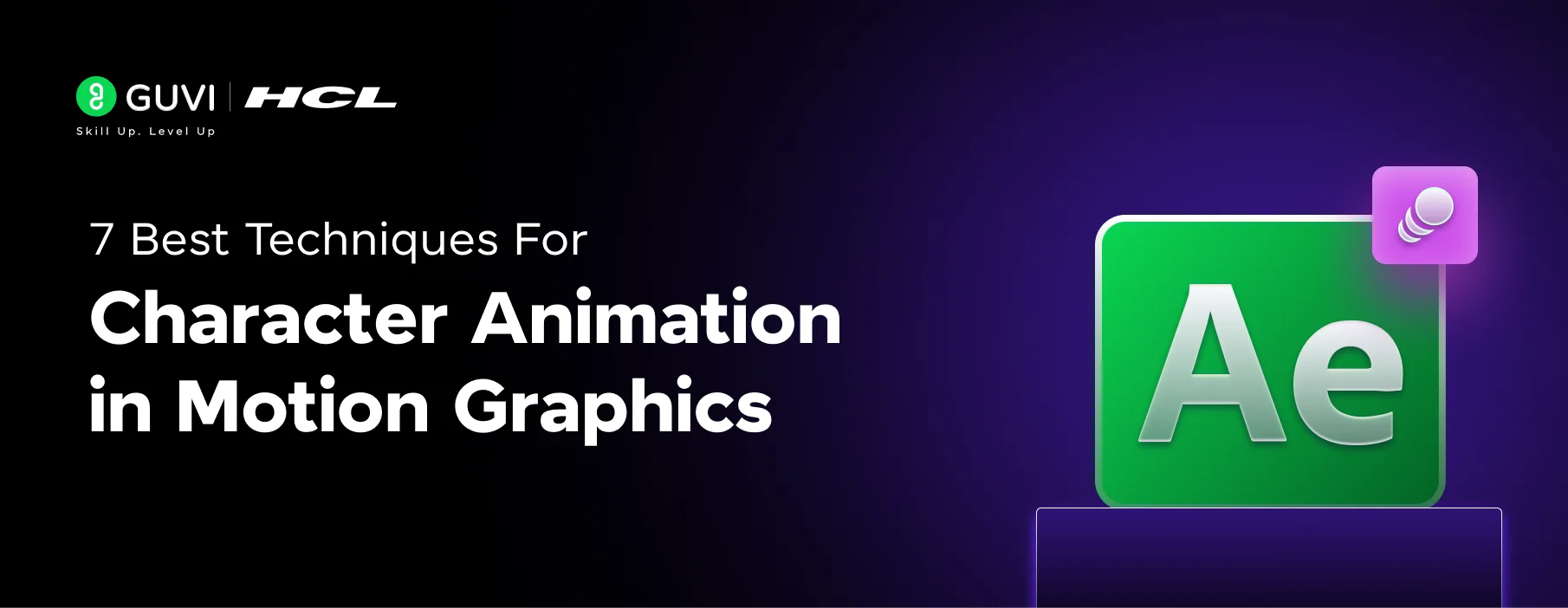
7 Best Techniques For Character Animation in Motion Graphics
Mar 06, 2025 5 Min Read 3209 Views
(Last Updated)
Character animation in motion graphics is all about bringing your animated characters to life. It combines art and technology to create movements and expressions that make your characters seem real.
This approach has become vitally important today. It helps make your stories more engaging and allows deeper connections with your audiences.
Let’s learn more about the significance of character animation in motion graphics and explore the top techniques that make it so powerful.
Table of contents
- Evolution and Importance of Character Animation in Motion Graphics
- Top 7 Techniques to Master Character Animation in Motion Graphics
- 1) Silhouette Testing
- 2) Shape Language
- 3) Color Palettes
- 4) Exaggeration
- 5) Symbolic Elements
- 6) Squash and Stretch
- 7) Staging
- Final Thoughts
- Frequently asked questions
- What are the important skills required for character animation?
- How does character animation in motion graphics differ from traditional animation?
- What is the role of inverse kinematics in character animation?
- How do particle effects enhance character animation?
- Can character animation be used in educational content?
Evolution and Importance of Character Animation in Motion Graphics
Character animation has a rich history. It began with early hand-drawn animations, such as the iconic “Steamboat Willie,” which introduced Mickey Mouse in 1928. These early animations captured the hearts of audiences with their charm and creativity.
Over the years, technology has transformed character animation. The introduction of computers allowed animators to create more complex and detailed animations. This evolution can be seen in modern movies like Pixar‘s “Elemental,” which features characters from elements like air, water, earth, and fire. These characters are not only visually stunning but also deeply engaging.
Moreover, character animation in motion graphics plays a vital role in marketing campaigns and branding. Animated characters help brands connect with their audience on an emotional level. For example, mascots like the Geico Gecko or Tony the Tiger are brand ambassadors that audiences recognize and trust.
If you are observant, you will find character animation everywhere. From advertisements and social media posts to explainer videos and educational content, animated characters make content more engaging and fun. Even a simple awareness campaign from the Reserve Bank of India featuring Amitabh Bachchan uses an animated character for enhanced engagement.
Also, given how substantially we are consuming content digitally, the prevalence of character animation in motion graphics will only grow as brands continue to forge strong emotional connections with their audiences.
Must Know More About Career in Animation: Jobs, Salary, Future Scope in India (2024)
Before we proceed further, it’s essential to have a solid foundation in graphic design principles and animation basics. If you’re eager to dive deep into creating captivating motion visuals, consider joining GUVI’s Adobe Certified VFX Career Program with AI Integration. In this program, you’ll learn the fundamentals of animation, visual effects, and storytelling techniques. Gain hands-on experience with industry-standard tools and techniques, and unlock your creativity to craft stunning motion graphics for videos, presentations, and more.
Top 7 Techniques to Master Character Animation in Motion Graphics
Using the right techniques is essential for mastering character animation in motion graphics. These techniques help animators like you with the capabilities to make lifelike characters, adding depth and realism to their movements and expressions.
Let’s explore some of the top techniques to help you create stunning character animations.
1) Silhouette Testing
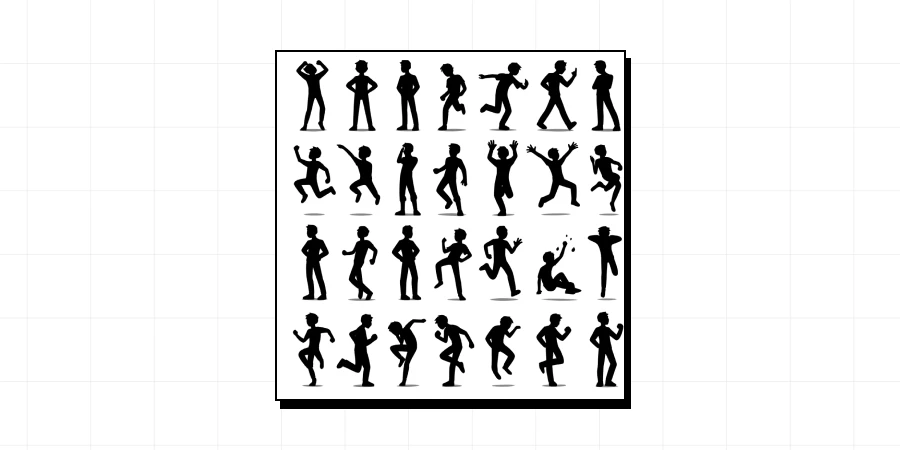
Silhouette testing is a fundamental technique in character animation in motion graphics that ensures the readability and recognizability of characters purely by their outlines. By viewing characters in silhouette form, animators can quickly determine if their poses and movements are clear and distinguishable.
It’s especially crucial during fast-paced action scenes where clarity is paramount. For instance, a strong pose with a clear silhouette can instantly communicate whether a character is happy, sad, or angry. This technique is widely used during the initial stages of character animation in motion graphics to refine character poses and actions before adding finer details.
This process involves filling the character’s outline with a solid color, usually black, to remove any distractions caused by internal details. Silhouette testing is an invaluable tool for creating dynamic and readable animations that resonate with viewers.
Also Read: 10 Must-have Skills for a Motion Graphics Designer in 2024
2) Shape Language
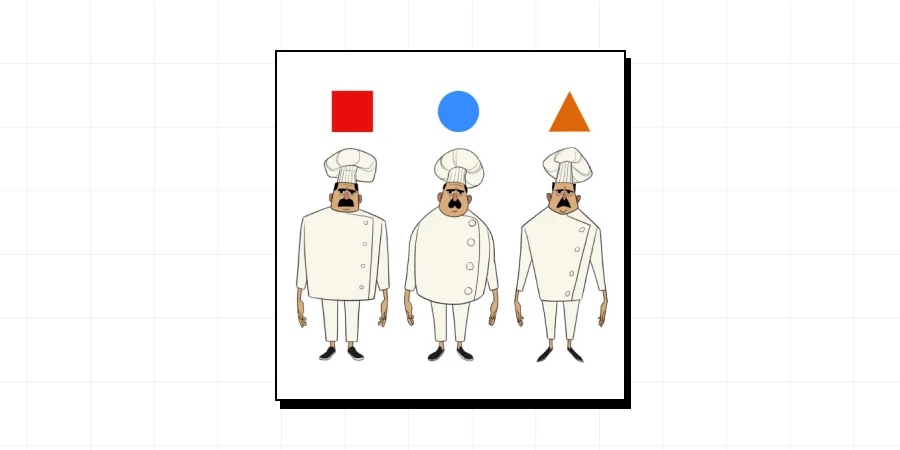
Shape language is a crucial aspect of character animation in motion graphics, referring to the use of geometric shapes to convey specific traits and emotions in character design. Different shapes inherently communicate different feelings; for example, circles are often associated with friendliness and softness, squares with stability and reliability, and triangles with aggression and danger.
By integrating these shapes into character designs, animators can subtly influence how the audience perceives a character’s personality. It can also help create a cohesive and believable character that aligns with its intended personality traits in character animation in motion graphics.
Animators can experiment with various shapes during the design phase to find the perfect balance that conveys the desired emotions. By consistently applying shape language throughout the animation, from character design to movement, animators can create characters that are not only visually appealing but also emotionally resonant and easily understood by the audience.
3) Color Palettes
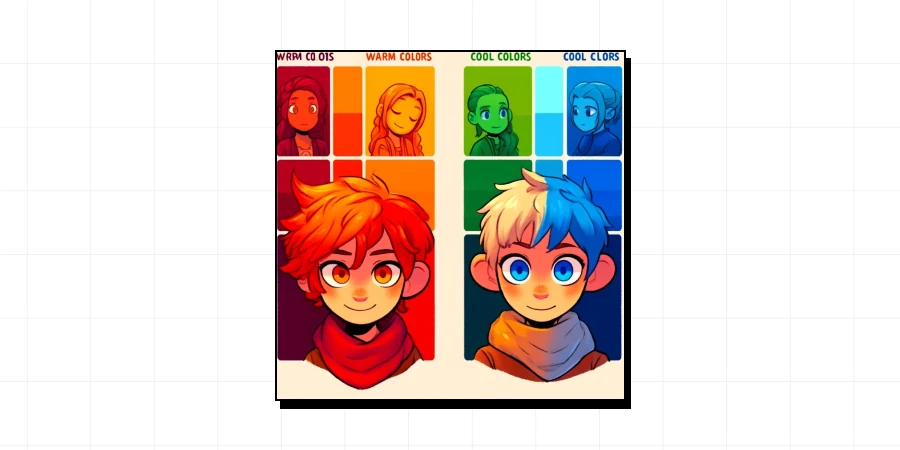
Color palettes play a pivotal role in character animation in motion graphics, significantly influencing the mood and tone of a scene. The choice of colors can evoke specific emotions and reactions from the audience, making it a powerful tool for animators.
For instance, warm colors like red, orange, and yellow can create a sense of excitement or warmth, while cool colors like blue, green, and purple can evoke calmness or sadness. By carefully selecting a color palette, animators can enhance the storytelling and emotional impact of their characters.
In character animation in motion graphics, color palettes are often used to distinguish between characters and signify their traits or roles within the story. Heroes might be adorned with bold, vibrant colors to signify bravery and strength, while villains might be characterized by darker, more subdued hues to indicate mystery or danger. This visual differentiation helps the audience quickly identify and understand each character’s role, adding depth and clarity to the narrative.
Additionally, color palettes can be used to create visual harmony and consistency throughout an animation.
Also read: Must-know Tools and Software for Motion Graphics Designers in 2024
4) Exaggeration
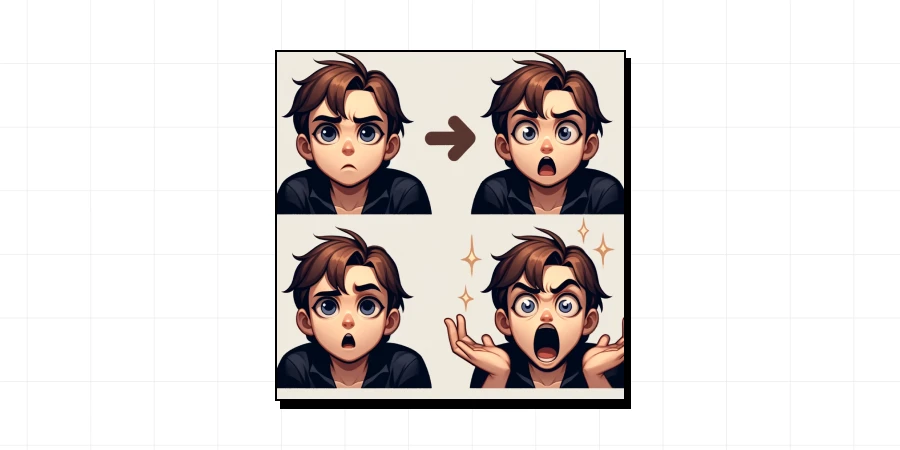
Exaggeration is a core principle in character animation in motion graphics that involves amplifying actions, expressions, and movements to create more dynamic and engaging animations. By exaggerating certain aspects of a character’s behavior, animators can make the action more readable and entertaining, enhancing the overall impact.
For example, a character’s surprise might be shown with an overly wide-eyed expression and exaggerated body language, making the emotion instantly recognizable and memorable.
This technique is especially useful in conveying emotions and actions that might otherwise be too subtle to notice. It’s often a way to translate the essence of real-life, ‘nuanced’ behaviors into a more expressive and clear animated form.
However, over-exaggerating can lead to characters that appear unrealistic or cartoonish, which might not suit the intended tone of the animation. Therefore, animators need to find the right level of exaggeration that enhances the animation without compromising believability.
5) Symbolic Elements
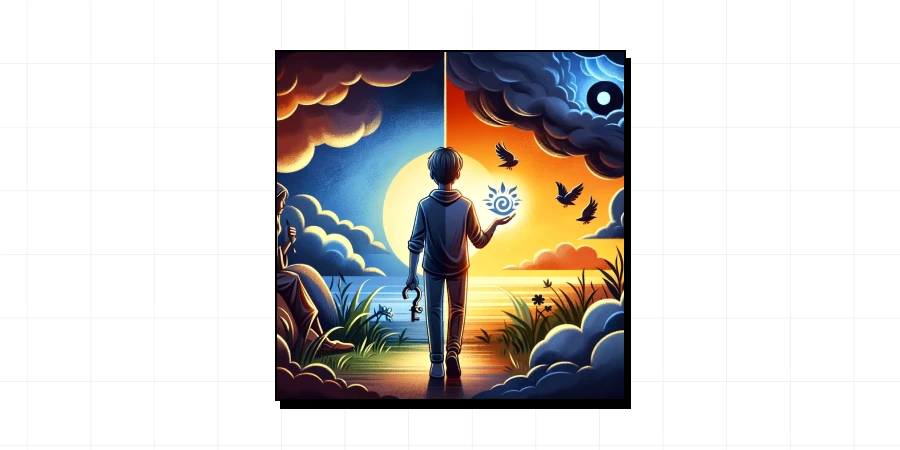
Symbolic elements in character animation in motion graphics involve the use of symbols and visual metaphors to convey deeper meanings and themes. These elements can range from simple icons to complex imagery that represents various concepts or emotions.
For example, a character might carry a specific object that symbolizes their quest or inner conflict, or their environment might change color to reflect their emotional state. Instead of relying solely on dialogue or narration, animators can use symbols to communicate underlying themes and character motivations. This approach not only makes the animation more visually engaging but also allows for more subtle and nuanced storytelling. For instance, a character’s journey might be symbolized through the changing seasons, reflecting their growth and development.
When done well, symbolic elements can add a rich, poetic dimension to the animation, making it more thought-provoking and memorable. By using symbols to represent abstract concepts, animators can create deeper connections with the audience and convey messages in a more powerful and impactful way in character animation in motion graphics.
Also Explore: 10 Inspiring Motion Graphics Artists You Should Follow
6) Squash and Stretch
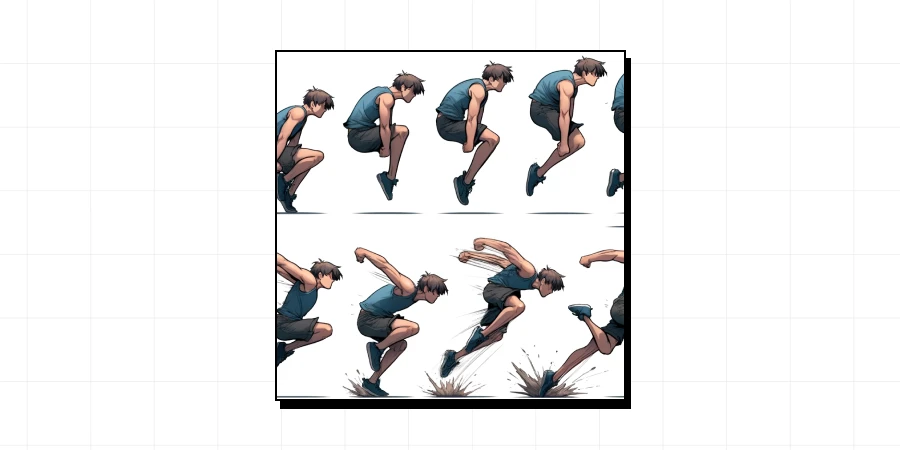
Squash and stretch is a fundamental technique that adds a sense of weight, flexibility, and realism to character animation in motion graphics. This technique involves exaggerating the squashing and stretching of a character’s form to emphasize motion and impacts.
For example, when a character jumps, their body might stretch to indicate the force of the jump and then squash when they land to show the impact. This exaggerated deformation helps convey the physical properties of the character and their actions.
In real life, objects and muscles compress and expand as they move and interact with forces like gravity. By replicating these movements in animation, characters appear more lifelike and dynamic. This technique is particularly useful in adding personality and expressiveness to animated characters, making their actions more engaging and believable.
7) Staging
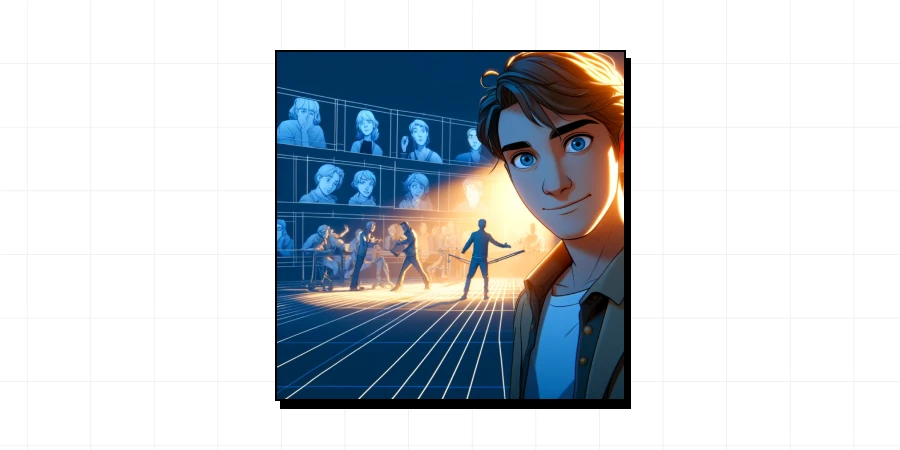
The Staging element in character animation in motion graphics refers to the clear presentation of an idea or action, ensuring that the audience understands what is happening in a scene. This involves arranging elements within the frame to direct the viewer’s attention to the most important parts of the action. Effective staging helps create a visually coherent scene that communicates the intended message or emotion clearly and efficiently.
A well-staged scene uses composition, lighting, and camera angles to highlight the key aspects of the action. For instance, placing the main character in the foreground and using lighting to draw attention to their face can emphasize their emotional state. Good staging ensures that every part of the frame contributes to the overall storytelling.
In character animation in motion graphics, staging is crucial for conveying the narrative and enhancing the emotional impact of the scene. By carefully considering the placement and movement of characters, as well as the use of background elements, animators can create scenes that are not only visually appealing but also narratively effective.
Also Read: Top 15 Motion Graphic Trends for 2024
Enroll in GUVI’s Adobe Certified VFX Career Program with AI Integration to get your career off to a great start. Here, you will work on amazing real-world projects while learning how to use Adobe Illustrator, Photoshop, After Effects, and Premiere Pro.
Final Thoughts
To conclude, embracing these design techniques will help refine your projects for character animation in motion graphics. These techniques will breathe life into your animations, making them resonate deeply with your audience.
By exploring and experimenting with these techniques, you can surely bring your characters to life in engaging and visually stunning ways. We encourage you to explore these and discover what works best for your projects.
If you’ve used any of these techniques or have other recommendations, please share your experiences in the comments section. We would love to know!
Also Explore: Top 50 Motion Graphics Interview Questions and Answers
Frequently asked questions
Key skills for character animation in motion graphics include understanding motion principles, proficiency in animation software, strong creativity, attention to detail, and knowledge of rigging and compositing.
While both involve bringing characters to life, character animation in motion graphics focuses on shorter, more dynamic sequences often used in advertisements, explainer videos, and social media content. Traditional animation, on the other hand, is usually used for longer formats like movies and TV shows.
Inverse kinematics (IK) helps create realistic character movements by calculating the necessary joint rotations to achieve a desired end-effector position, simplifying the animation of limbs and appendages.
Particle effects add visual elements like fire, smoke, and rain to animations, creating more immersive and visually appealing scenes. They are often used in tools like the Trapcode Suite.
Yes, character animation is widely used in educational content to make learning more engaging and interactive, simplify complex concepts, and retain viewer interest.









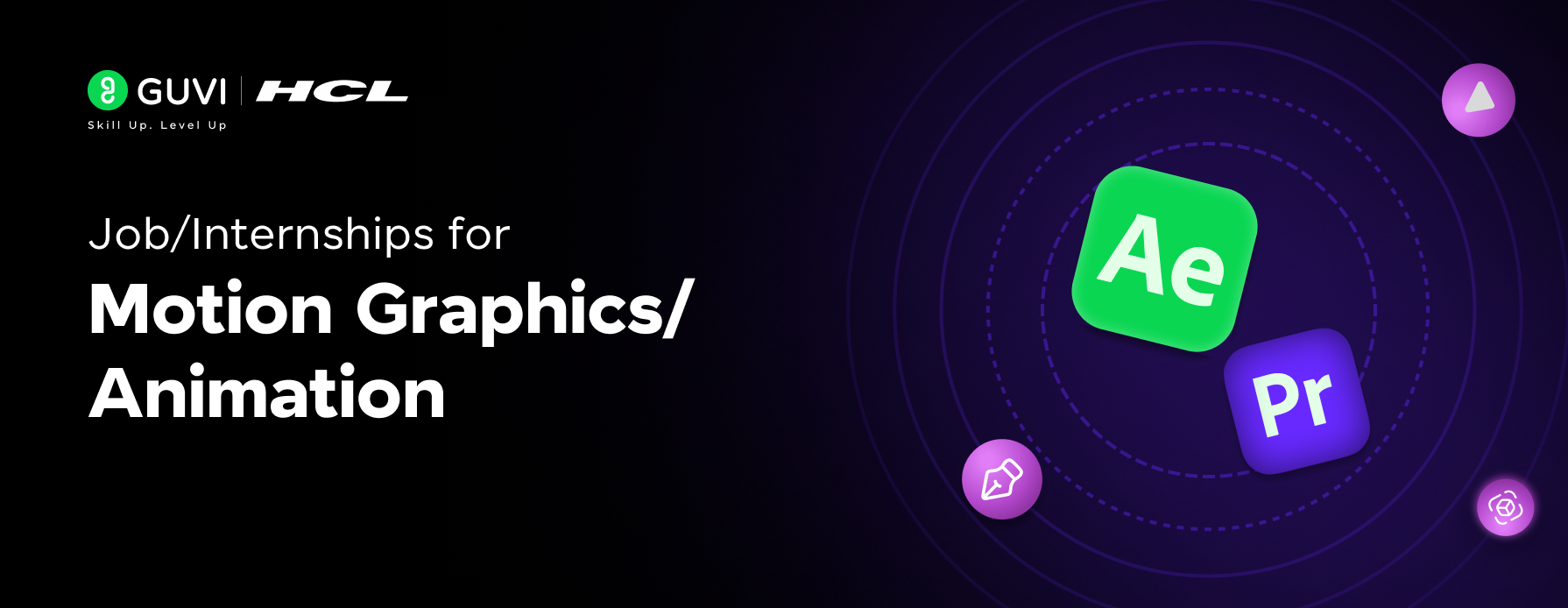
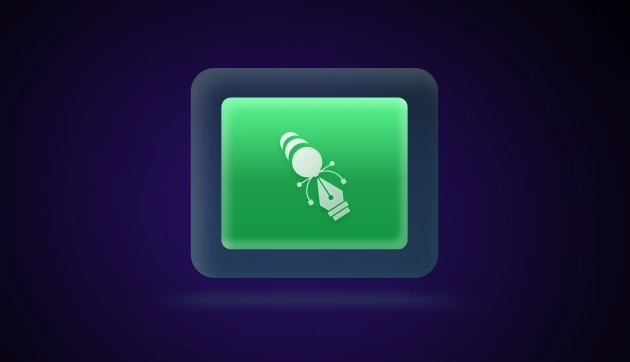
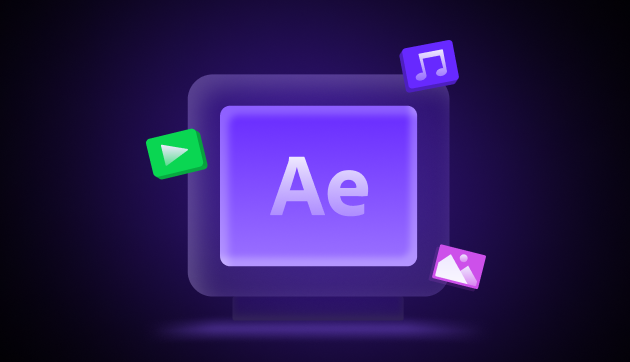
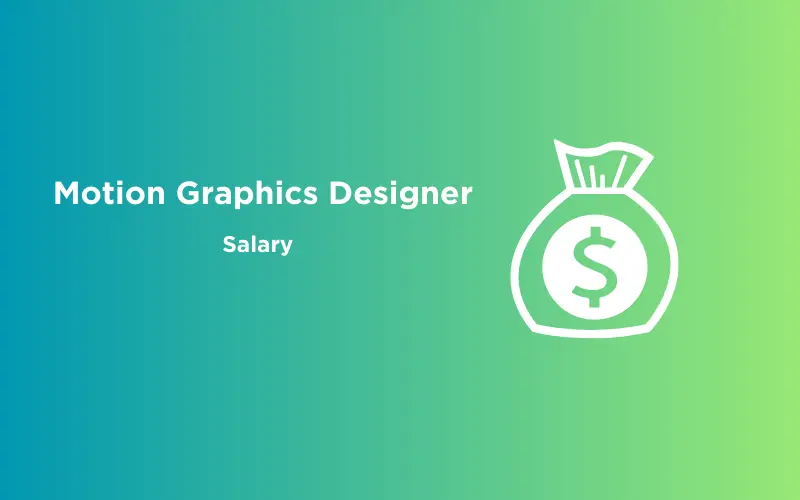
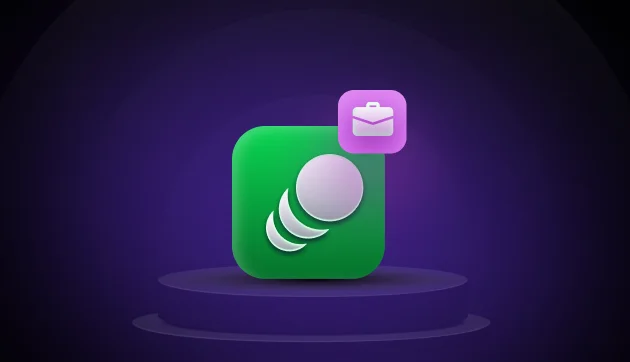


![8 Best Books to Learn Motion Graphics Design [Must-Reads] 13 Feature image - Best Books to Learn Motion Graphics Design](https://www.guvi.in/blog/wp-content/uploads/2023/10/Feature-image-Best-Books-to-Learn-Motion-Graphics-Design.webp)


Did you enjoy this article?